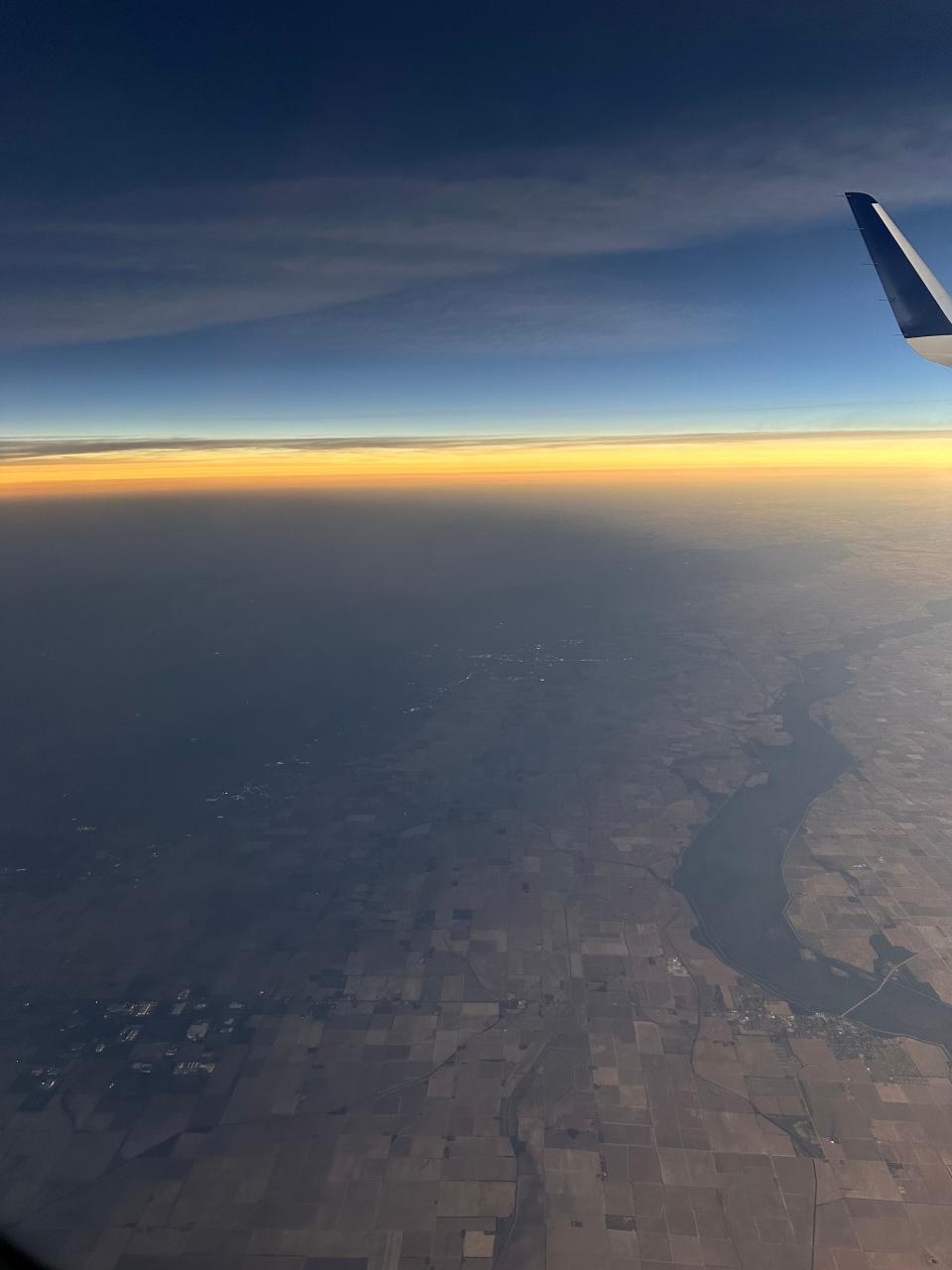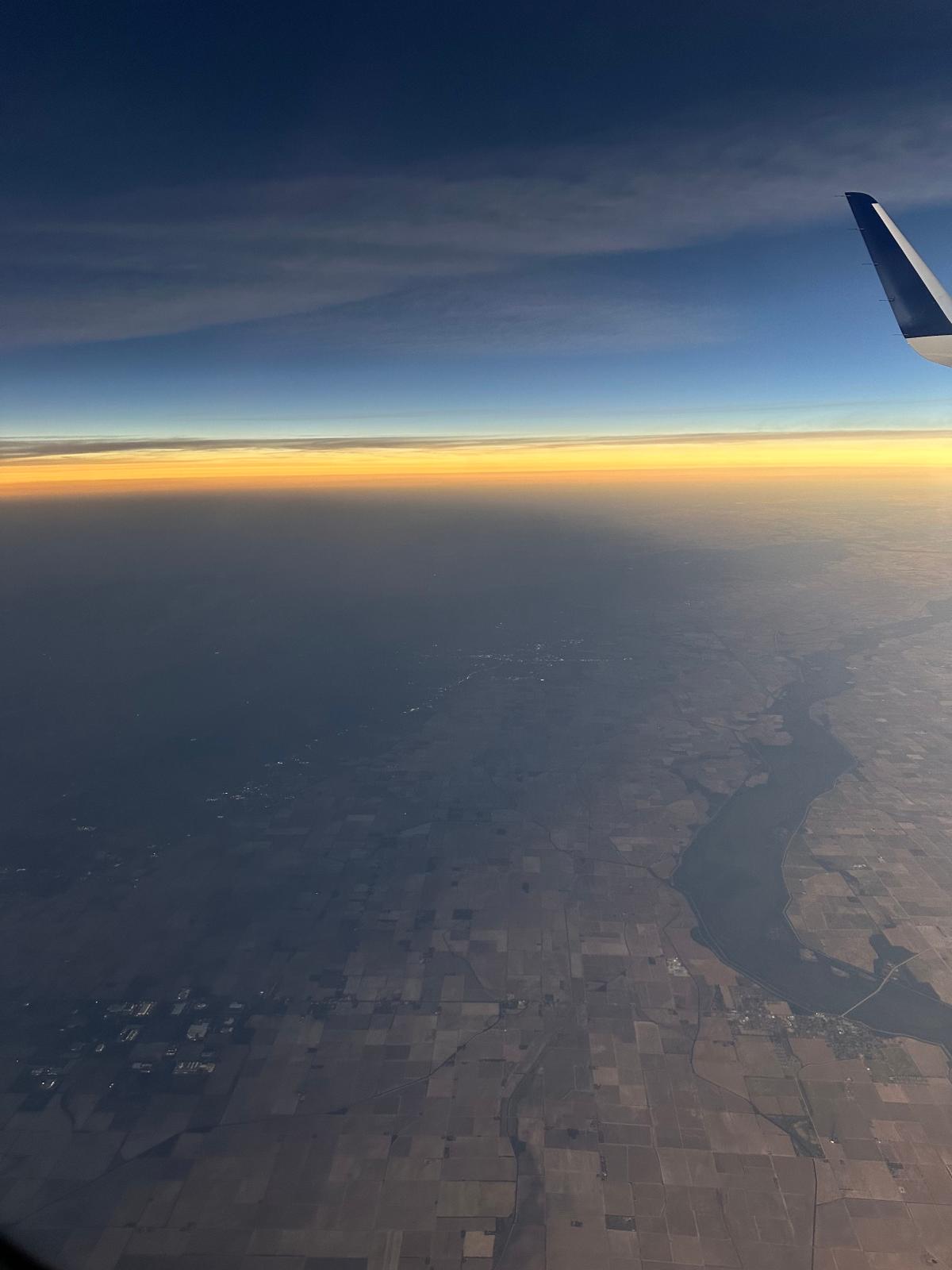It was certainly a different perspective. On the ground, the main event is, of course, seeing the moon fully obscure the sun. But from the sky, the real show was seeing the shadow of totality sweep over the landscape below, to watch as street lights flickered on in that temporary darkness while daylight reigned just over the edge.
I flew as a guest of Delta Air Lines on flight 1010 from Dallas-Fort Worth to Detroit, and we encountered the experience of totality for about four minutes over southeastern Missouri.
‘The ship can move’: Why you should watch next solar eclipses from a cruise ship
Because the eclipse itself was only visible to those on the south side of the plane, the team at Delta planned ahead and got special permission to execute turns during totality so everyone onboard could see – about two minutes per side.
“For us it’s a normal flight. For this flight just knowing where the sun was going to be, just trying to maximize the opportunities for the passengers,” Alex Howell, chief standards captain for Delta’s Airbus A320 fleet and pilot in charge on flight 1010 told me just after we landed in Detroit. “It was great. It really went off without a hitch.”
Onboard, the mood was festive. I can’t remember the last time I was on a flight where there was applause after almost every announcement, at the start of the takeoff roll, again when we lifted off the ground, and once more when we landed. Usually I’m not a fan of this kind of clapping, but for the solar eclipse, I could make the exception.
Delta’s representatives told me it was a cross-company effort to get the flight I was on, and another eclipse special from Austin, off the ground. It was a good reminder that the miracle of flight can unlock many other experiences for passengers.
How the flights were planned
According to Chris Clisham, a Delta flight superintendent, the first step in planning these special eclipse flights was determining the timing.
“What went into it is seeing where we wanted to intersect that shadow, where we wanted to see that totality and work backward from there,” he said. “Then we backed up and said, ‘OK, what kind of departure time do we need for that?’”
After that, the planning happened much like any other flight, although some extra, advanced communication with air traffic control was involved.
“The planning was, on one hand, routine, what we do for every flight, every day sort of a thing, but on the other hand, as we got closer to the event today, the focus became on cloud cover,” Warren Weston, Delta’s lead meteorologist, told me in Dallas before we boarded.
It was cloudy as we departed Dallas, and even at cruising altitude (ha!) there was some wispy coverage, but it broke just before the moon and sun did their tango.
What else you can see from a plane

Of course, eclipses are fairly rare events, but they’re hardly the only natural wonders visible from commercial flights.
Mark Vanhoenacker, a Boeing 787 pilot for British Airways and author of “Skyfaring” and “Imagine a City,” told me flying is a constant reminder of the magic going on in the sky.
“The northern lights are, I think they’re probably the most amazing thing we see from the flight deck,” he said. “It’s such an amazing thing and they shimmer and they kind of have this quality of milk landing in coffee, they have this very slow motion that you almost can’t perceive until you look away from them and then you look back and it’s different.”
Vanhoenacker said auroras and eclipses aren’t the only spectacles out the window of a plane, either.
“I joke in ‘Skyfaring’ that we kind of run out of wishes. You see so many shooting stars. It’s a challenge to maintain our childhood excitement at that kind of thing, about all the wonders of flying, really,” he said. “One of the things that’s most special about flying is being above the clouds. A lot of people are not going to see the eclipse. One of the best ways to ensure you see any phenomena of the night sky is to be above the clouds.”
What it was like onboard
That idea of nearly guaranteed eclipse sighting was certainly a draw for passengers on flight 1010.
Many told me they had seen eclipses before and wanted to get a new perspective, and the mood onboard was friendly and celebratory – I, again, note all the clapping.
Clisham made a prediction ahead of the flight that turned out to be true: “The biggest difference is you’re going to see all the window shades up for once,” he said. “Everyone’s going to want to look out the window.”
As I sit in an aisle seat writing this on another flight where almost all the shades are down, I wish my fellow travelers would bring Vanhoenacker’s sense of wonder to every flight rather than just those that are marketed for what’s going on outside the window. Even if it’s not an eclipse, there’s always a lot to see from 35,000 feet.
The reporter on this story received access to this flight from Delta Air Lines. USA TODAY maintains editorial control of content.
Zach Wichter is a travel reporter for USA TODAY based in New York. You can reach him at zwichter@usatoday.com
This article originally appeared on USA TODAY: Watch the next solar eclipse from a special flight
